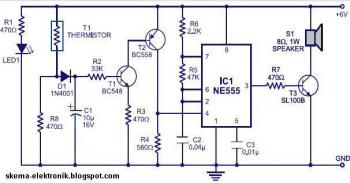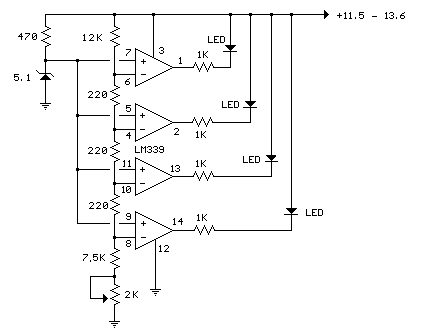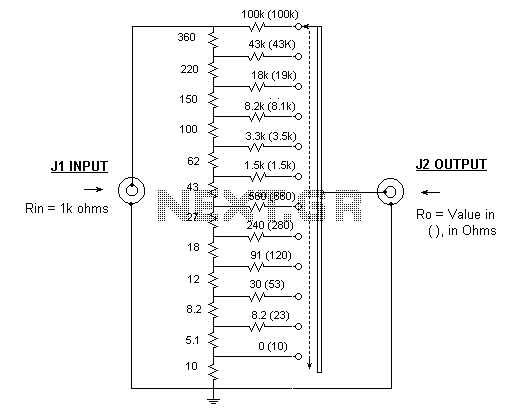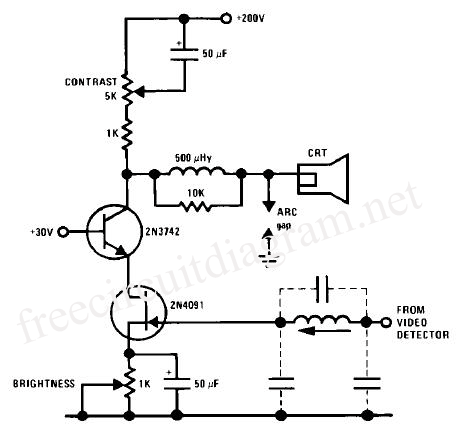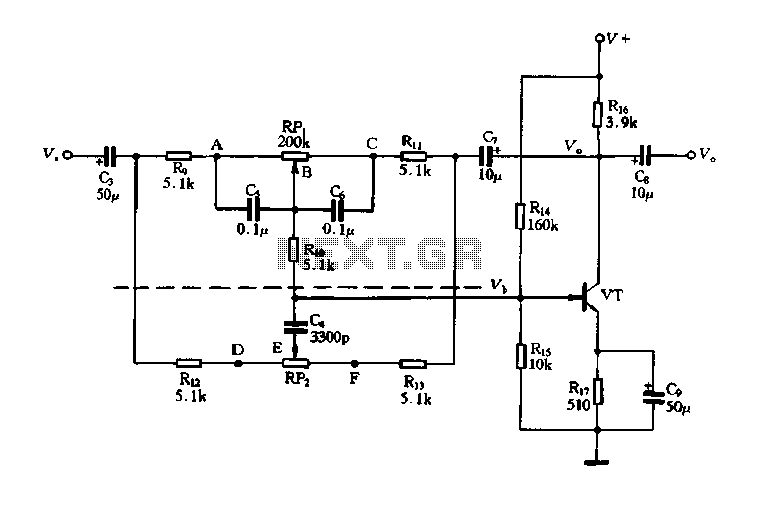
S Meter For Communications Receivers Circuit
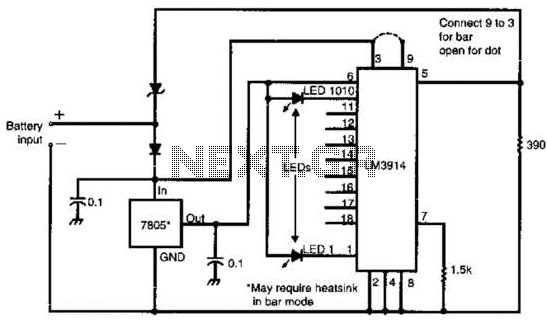
Many amateur receivers are equipped with an S meter that does not operate logarithmically. The proposed circuit is intended to enhance such receivers. Although integrated circuits like the CA3089 or CA3189 are not commonly used today, they play a valuable role in the meter circuit. These ICs include a symmetric limiter, a coincidence detector, and an AFC amplifier, along with a high-quality logarithmic amplifier-detector. The circuit is relatively straightforward, but it is important to note that these ICs function effectively up to approximately 30 MHz, and the wiring for the meter and its connections to the receiver should be kept as short as possible.
The proposed circuit aims to improve the functionality of S meters in amateur radio receivers, which often lack logarithmic response characteristics. By integrating the CA3089 or CA3189 ICs, the circuit can significantly enhance the accuracy of signal strength measurements. The symmetric limiter helps to prevent distortion of the incoming signal, while the coincidence detector ensures that only valid signals are processed. The automatic frequency control (AFC) amplifier stabilizes the output frequency, enhancing the reliability of the measurements.
The logarithmic amplifier-detector included in these ICs is particularly beneficial, as it provides a more accurate representation of signal strength over a wide dynamic range. This is essential for users who require precise signal level readings for effective communication and troubleshooting.
Considering the operational frequency range of up to 30 MHz, it is crucial to maintain short and efficient wiring for the meter connections. This minimizes potential signal loss and interference, ensuring that the S meter delivers accurate readings. Proper layout and grounding techniques should be employed to further enhance the circuit's performance and reliability.
In summary, the integration of these components into the S meter circuit not only simplifies the design but also significantly improves its functionality, making it a valuable enhancement for amateur radio enthusiasts seeking better performance from their receivers. Because many amateur receivers are fitted with an S meter that functions far from logarithmically, the proposed circuit should be a welcome extension of such receivers. Although ICs such as the CA3089 or the CA3189 are not in common use anymore, they serve a useful purpose in the meter circuit, because, apart from a symmetric limiter, a coincidence detector, and an AFC amplifier, they contain a very good logarithmic amplifier-detector.
As is seen, the circuit is fairly simple, but remember that these ICs operate up to about 30 MHz; the wiring of the meter and its connections in the receiver should be kept as short as possible. 🔗 External reference
The proposed circuit aims to improve the functionality of S meters in amateur radio receivers, which often lack logarithmic response characteristics. By integrating the CA3089 or CA3189 ICs, the circuit can significantly enhance the accuracy of signal strength measurements. The symmetric limiter helps to prevent distortion of the incoming signal, while the coincidence detector ensures that only valid signals are processed. The automatic frequency control (AFC) amplifier stabilizes the output frequency, enhancing the reliability of the measurements.
The logarithmic amplifier-detector included in these ICs is particularly beneficial, as it provides a more accurate representation of signal strength over a wide dynamic range. This is essential for users who require precise signal level readings for effective communication and troubleshooting.
Considering the operational frequency range of up to 30 MHz, it is crucial to maintain short and efficient wiring for the meter connections. This minimizes potential signal loss and interference, ensuring that the S meter delivers accurate readings. Proper layout and grounding techniques should be employed to further enhance the circuit's performance and reliability.
In summary, the integration of these components into the S meter circuit not only simplifies the design but also significantly improves its functionality, making it a valuable enhancement for amateur radio enthusiasts seeking better performance from their receivers. Because many amateur receivers are fitted with an S meter that functions far from logarithmically, the proposed circuit should be a welcome extension of such receivers. Although ICs such as the CA3089 or the CA3189 are not in common use anymore, they serve a useful purpose in the meter circuit, because, apart from a symmetric limiter, a coincidence detector, and an AFC amplifier, they contain a very good logarithmic amplifier-detector.
As is seen, the circuit is fairly simple, but remember that these ICs operate up to about 30 MHz; the wiring of the meter and its connections in the receiver should be kept as short as possible. 🔗 External reference
Warning: include(partials/cookie-banner.php): Failed to open stream: Permission denied in /var/www/html/nextgr/view-circuit.php on line 713
Warning: include(): Failed opening 'partials/cookie-banner.php' for inclusion (include_path='.:/usr/share/php') in /var/www/html/nextgr/view-circuit.php on line 713
